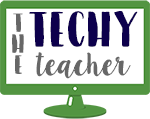In the mid-1950s, educator Dr. Benjamin Bloom and a team of other educators created what is known as “Bloom’s Taxonomy.” Essentially, Bloom and his colleagues believed that student learning needs to occur on multiple levels, showing a transition from lower order thinking skills to higher order thinking skills.
The Original Taxonomy
Bloom and his team broke learning into six categories: knowledge, comprehension, application, analysis, synthesis, and evaluation. According to his taxonomy, to truly master a subject, a student would start with lower-order thinking skills (knowledge) and build to the highest level (evaluation). Each category was associated with different verbs that teachers were encourage to use in creating their objectives.
So, for example, if I was testing a student’s knowledge, I may want them to name the characters in Romeo and Julie that were in an alliance with Juliet’s family or I may want them to label parts of a body in a biology class. You can see the chart below for examples of the verbs associated with each of the categories in the original taxonomy.
Bloom’s Revised Taxonomy
In the late 1990s and early 2000s, Lorin Anderson, a former student of Bloom, and a team of educators revisited Bloom’s original taxonomy and made some changes. Some of the major differences were that they changed the names in the six categories from noun to verb forms and they rearranged the levels in the higher-order thinking. Another important change made by the new team is that the taxonomy isn’t levels that are built on, necessarily. An initial lesson in a unit could have both lower and higher level thinking skills. Higher order thinking skills are no longer limited to the end of a lesson or unit.
This is the Revised Taxonomy:

Here’s a bit more thorough breakdown.

Remembering: can the student recall or remember the information? (define, duplicate, list, memorize, recall, repeat, reproduce, state)
Understanding: can the student explain ideas or concepts? (classify, describe, discuss, explain, identify, locate, recognize, report, select, translate, paraphrase)
Applying: can the student use the information in a new way? (choose, demonstrate, dramatize, employ, illustrate, interpret, operate, schedule, sketch, solve, use, write)
Analyzing: can the student distinguish between the different parts? (appraise, compare, contrast, criticize, differentiate, discriminate, distinguish, examine, experiment, question, test)
Evaluating: can the student justify a stand or decision? (appraise, argue, defend, judge, select, support, value, evaluate)
Creating: can the student create new product or point of view? (assemble, construct, create, design, develop, formulate, write)
Bloom’s Digital Taxonomy
Andrew Church made another version of Bloom’s Taxonomy, building off of the Revised Taxonomy. This is an update to Bloom’s Revised Taxonomy helped relate the taxonomy and levels of lower and higher order thinking skills to technology advances and technology that would be used in the classroom. Church argued that Bloom’s Revised Taxonomy described many traditional classroom practices, behaviors and actions, but it did not account for the new processes and actions associated with Web 2.0 technologies, infowhelm (the exponential growth in information), increasing ubiquitous personal technologies or cloud computing. Bloom’s Digital Taxonomy isn’t about the tools or technologies rather it is about using these to facilitate learning. Outcomes on rubrics are measured by competence of use and most importantly the quality of the process or product. For example, bookmarking a resource is of no value if the resource is inappropriate, invalid, out of date or inaccurate. Bloom’s Digital Taxonomy lends itself to problem and project-based learning where the student must work through the entire process of development and evaluation.
Using Bloom for Reflection and Professional Development
This website is a great site and has great resources for how to use the taxonomy in reflection for administrators, teachers, and students.
More Bloomin’ Resources
The Techy Teacher Pinterest Board for Bloom’s Taxonomy
Best Resources for Helping Teachers Use Bloom’s Taxonomy in the Classroom (amazing list!!)
Applications on the iPad and Android that use Bloom’s Taxonomy
Using Bloom’s Taxonomy in the Classroom
Kathy Schrock’s Bloom Resources
Bloom Wheel with Verbs for Each Area
Bloom and Critical Thinking Skills Graphic



Add A Comment